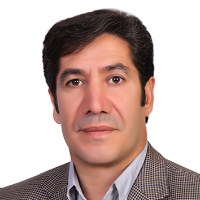Detection of Land Use Changes Using Object Oriented and Pixel Base Techniques (Case Study: Mordagh Chai Basin)
Due to increasing land-use changes, mainly for human activities, it is necessary to monitor vegetation changes, evaluate their trends and their environmental impacts for future planning and resource management. With the increase in population and the development of technologies, human beings are, currently, considered the most important and powerful tool of environmental change in the biosphere. Land use is the type of land use in the current situation, which includes all land uses in various sectors of agriculture, natural resources, and industry. Due to the provision of a wide and integrated view of an area, reproducibility, easy access, high accuracy of information obtained, and high speed of analysis, using satellite data is a good way to prepare a land-use map, especially in large geographical areas. One of the most widely used methods of extracting information from satellite images is classification, which allows users to generate different information. According to the type of classification method of the study area, the characteristics of the educational points get different results to separate the thematic phenomena and extract information more accurately.
Mordagh River, which is known as Mordi Chai in the region, originates from the southern slope of Sahand Mountain located in East Azerbaijan and flows south. By connecting the sub-branches, it continues its way to the city of Maragheh, passes through the city of Malekan, and enters Lake Urmia. In the present study, Landsat satellite images, TM, and OLI sensors from 2000 and 2020 were used to identify the area and prepare a land-use map. To prepare for classification and processing on them, the necessary pre-processing was first done on the images. Images were pre-processed in ENVI5.3 software using the FLAASH method. Finally, ENVI5.3 software was used to classify the base pixel and eCognition Developer 64 software was used for object-oriented classification. To evaluate the classification results, the Kappa coefficient and overall accuracy were used to evaluate the classification accuracy of the maps.
According to the obtained results, it is observed that the most area in the study area in 2000 with the method of minimum distance belongs to the use of medium and dense rangeland. The lowest area for the year 2000 is the use of residential areas. In 2020, the highest area of land use is 173.875 square kilometers. The lowest area is related to the use of snow with a rate of 0.199 square kilometers and the use of residential areas, which compared to 2000, has an increase of up to 5.54 square kilometers. In the maximum likelihood method in 2000 and 2020, the highest areas are related to medium rangeland and soil uses, respectively. The lowest area for 2000 is related to vegetation and for 2020 is snow use. In addition, in the support vector machine method, the highest and lowest areas for 2000 are related to medium rangeland and vegetation uses, respectively, and for 2020, medium rangeland and snow uses have the highest and lowest areas, respectively. According to the maps obtained from the object-oriented method, the highest area in 2000 is related to medium rangeland with 156.406 square kilometers and then dense rangeland with 96.514 square kilometers. The lowest area is related to the use of residential areas with 11.141 square kilometers. In 2020, the highest area is related to the use of dense rangeland (126.907 square kilometers). In addition, the lowest area is snow use with an amount of 5.199 square kilometers.
According to the results of this study and other studies, it can be suggested that the object-oriented classification method for land-use change studies is a more appropriate and accurate method than the pixel-based method. One of the most important reasons for achieving high accuracy in the object-oriented classification method is that in this method, in addition to spectral information, information related to texture, shape, position, and content is also used in the classification process. The study of pixel-based classification showed that in selecting educational examples, the more uniform the user is and free of mixed pixels, the more accurate the classification process is. So that the land use classification and vegetation in the pixel-based method had the highest accuracy, which due to the uniform surface of both land use and homogeneous texture, the selection of training samples in these uses with the highest accuracy and have played an important role in improving overall accuracy and kappa coefficient. Based on the results of the extent of different classes related to the land use of the basin studied in 2000 and 2020, we see a decreasing trend of dense rangeland, medium rangeland, and vegetation and increasing land use of residential areas and soil. What is very clear in these maps is the excessive reduction of pastures and their conversion to other uses.
Given the growing population and the need for food and economic issues, this transformation is obvious and it cannot be said that this change can be prevented.
- حق عضویت دریافتی صرف حمایت از نشریات عضو و نگهداری، تکمیل و توسعه مگیران میشود.
- پرداخت حق اشتراک و دانلود مقالات اجازه بازنشر آن در سایر رسانههای چاپی و دیجیتال را به کاربر نمیدهد.




